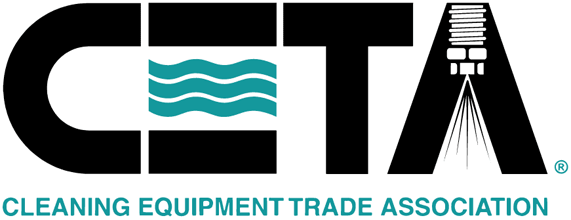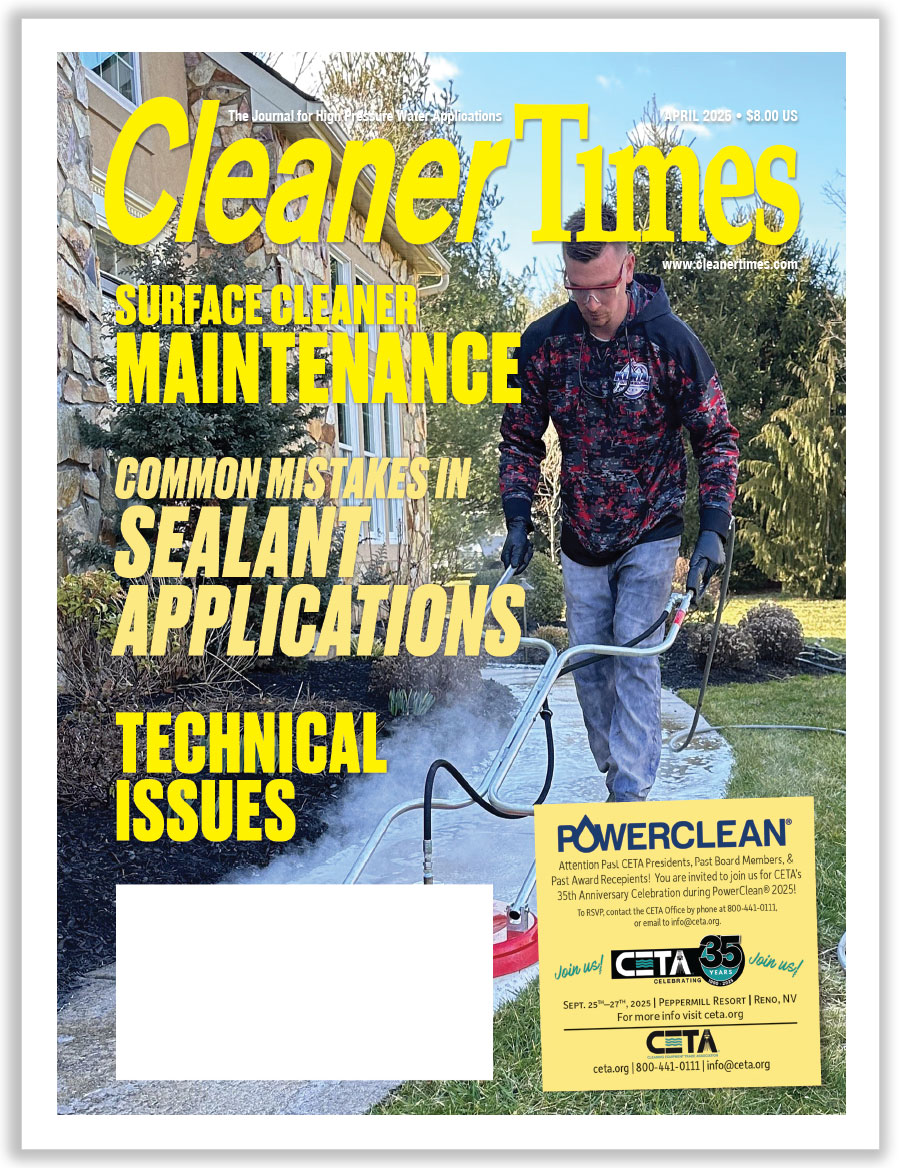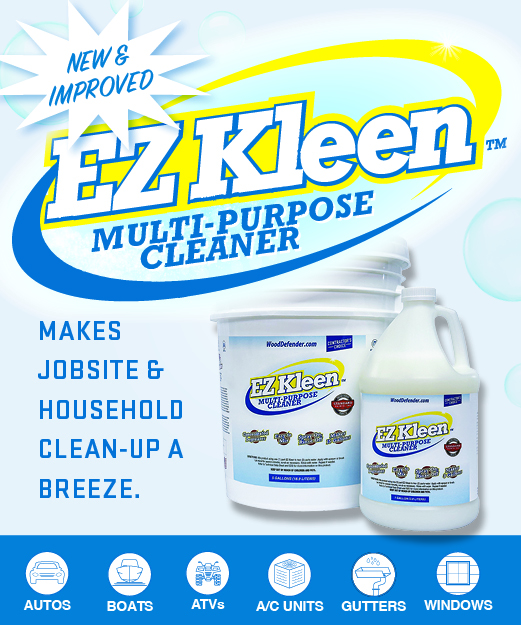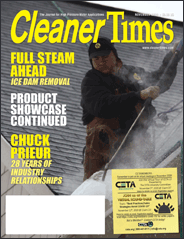
CETA Edge: Technical Issues
by Diane M. Calabrese | Published April 2025

Regulations, standards, certification, harmonization—good things, all. Yet keeping up with expectations—and changes to them—takes time. Fortunately, no one must do it alone.
The Cleaning Equipment Trade Association (CETA) offers its members abundant information about complex technical and regulatory issues—what’s in effect now and what’s in the pipeline. Let’s look at some of the how and why of what’s being done in the technical and regulatory realms.
Comments come to us from two individuals currently serving on the technical committee: Phil Petty, chairman, and Rick Gilpatrick, secretary. Petty is the general manager of Williams Cleaning Systems, with locations in Bakersfield and San Luis Obispo, CA. Rick Gilpatrick is the senior vice president for R&D at FNA Group in Pleasant Prairie, WI.
“I’m working closely with several experienced individuals and other committees in our industry to help increase awareness and standards in our industry—and across related products,” says Petty. He adds that he also wants to guide advocacy that will take place in the oft-vexing climate of regulatory changes.
Members working on technical issues have set an ambitious agenda. The top goals are finalizing the THC-335H and updating and improving the CPC-100 standards. THC is the acronym for Technical Harmonization Committee, a large working group of industry members assembled by CETA. Gilpatrick currently chairs the group.
Beyond the top objectives, there is much more in the works. For example, there is the possibility of revising high-pressure hose standards construction and testing to align with modern manufacturing processes.
There is much in the queue of issues the committee aims to take up. And Petty shares more examples. “Clarifying how reserve throttle will be determined on engines with electronic governors is one,” explains Petty.
“We have also proposed to look into establishing standards for commonly used connectors,” says Petty. The aim is to standardize high pressure connectors, both the pin and the receptacle, for the M22, ½ quick connect (qc) and 3/8 qc.
The committee also continues to promote awareness of the CPC-100 standard for manufacturers of pressure washers. A manufacturer that adheres to the standard makes it a much simple matter for purchasers of its equipment to compare attributes.
Although members of CETA are now fully aware of the CARB [California Air Resources Board] rules for small off-road engines (SORE), reminders about the changes that continue to occur, and expectations, must be kept in front of CETA members.
“When it comes to the technical CETA committee and its members, they are all passionate about the work they do for the industry,” says Petty. “They want to work toward positive and proper standards for the industry.”
Delving Deeper
With the overview in mind, let’s delve a bit deeper. Start with CPC-100, a performance standard that simplifies comparisons for equipment purchasers. A CPC-100 certified machine has been systematically compared with other machines in its category.
Of course, as engines change, the CPC-100 must incorporate the changes in its evaluation. Thus, determining how a reserve throttle will be determined on engines that have electronic governors has become a focus of the committee, says Gilpatrick.
Although some EFI [electronic fuel injection] engines do have mechanical governors, staying ahead of the issue requires being prepared to incorporate within the standard those that do not. “A reserve throttle cannot be documented in the same way as engines with mechanical governors when there is no mechanical governor on engines with EFI and E gov,” explains Gilpatrick.
The focus on hose connectors is not the only attention hoses are getting. The committee also has put a priority on high-pressure hose construction and testing methods, says Gilpatrick.
Regular review and updating of standards that undergird the CPC-100 are essential. “The efforts are necessary to assure safety and consistency to the products that carry the CETA-certified logo,” explains Gilpatrick.
CPC-100 participants adhere to an advertising code. For example, the maximum pressure a machine can be rated is 10 percent more than the calculated average. Or, if some prefer, the actual measured pressure and flow must be 90 percent of advertised flow.
The CETA CPC-100 standard also acknowledges an engine should not need to run at maximum rpm to achieve the maximum pressure; indeed, the standard requires a 15 percent reserve. Why a reserve measure? It serves as evidence of commitment by the manufacturer to engine longevity, making the certification particularly valuable to end users.
“The CPC-100 is the gold standard for product rating, and we at CETA know that consumers care about the quality and professionalism that comes with buying a CETA-certified machine,” says Gilpatrick. He adds the feedback from members and dealers brings high praise for the standard.
Continuous product improvement is a result of standards. It’s the ally of safer and safer products. Thus, a great fit.
“The value of CETA-certified pressure washers helps assure consumers, dealers, and contractors that the quality, craftsmanship, and product performance expectations are met on every machine made,” says Gilpatrick. “Consistency and fairness are what motivate committee members to make the certification process easy for all of its members and customers. We are proud of the work that CETA has done to improve the products that are sold in the market and well into the future.”
Gilpatrick recently agreed to lead the THC-335H group. His experience in reviewing submissions of products being evaluated for certification got the attention of the group.
“The THC-335H is a group of international members including manufacturers and representatives from UL and CSA [Canadian Standards Association],” he explains. “The committee is focused on the adaptation of the IEC 60335-2-79 into a UL 60335-2-79 and CSA 60335-2-79 with deviations.”
The effort at harmonization has been going on for years. The “335H” in the committee’s name derives from the last three digits of the standards that are being harmonized, and the “H” derives from harmonization. Despite the years of intense work, there are still differences to be resolved. For that reason, UL 1776, the original Underwriters Laboratories standard for pressure washers, which was to have been retired by now (replaced by the harmonized standard), is still in effect.
Those working on technical issues to the benefit of all CETA members—as well as the entire industry—strive to keep pace with regulations. They also endeavor to help shape regulations by providing feedback from the industry to regulators.
Just a few years ago, it seemed amazing that both commercial and residential lawn and garden users of engines would have their equipment swept into SORE regulations. But CETA was already aware of what might emerge, and members of the association testified about the concerns of our industry.
Thanks to efforts by representatives of CETA and other groups, manufacturers of new equipment have been given more time to meet lower emission requirements. For now, it appears the full enforcement of SORE will begin in 2026. And the enforcement will affect not only manufacturers based in the Golden State but also any manufacturer that sells in that state.
The CETA Technical and Standards Committee aims to keep pace with regulations affecting our industry, not only by monitoring changes and additions but also by commenting on proposed rules. It’s a huge undertaking. And CETA members reap the benefits of consolidated and concise information at the CETA.org website.





